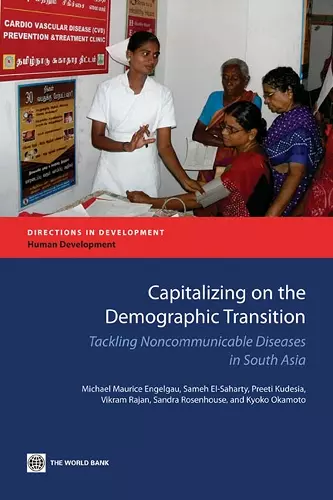Capitalizing on the Demographic Transition
Tackling Noncommunicable Diseases in South Asia
Sameh El-Saharty author Michael Maurice Engelgau author Preeti Kudesia author Vikram Rajan author Sandra Rosenhouse author Kyoko Okamoto author
Format:Paperback
Publisher:World Bank Publications
Published:30th Jun '11
Currently unavailable, and unfortunately no date known when it will be back

Increasing life expectancy in South Asia is resulting in a demographic transition that can, under the right circumstances, yield dividends through more favorable dependency ratios for a time. With aging, the disease burden shifts toward noncommunicable diseases (NCDs) which can threaten healthy aging. However, securing the gains expected from the demographic dividend-where developing countries' working and nondependent population increases and per capita income thus rises- is both achievable and affordable through efficiently tacking NCDs with prevention and control efforts. This book looks primarily at cardiovascular disease (CVD) and tobacco use since they account for a disproportionate amount of the NCD burden-the focus is strategic, rather than comprehensive. The goal of this book is to encourage countries to develop, adopt, and implement effective and timely country and, where appropriate, regional responses that reduce both population-level risk factors and the NCD burden.
The work develops (i) an NCD burden and risk factor profile for all countries and the region as a whole; (ii) a rationale for public policy and action for NCDs; (iii) a framework to guide the formulation of public policies and strategies for NCDs; (iv) a country profile, including capacity and ongoing NCD activities, as well as policy options and actions for NCDs that will help stimulate policy dialogue within and among countries; and (v) a regional strategy for NCD prevention and control where regional collaboration offers added value.
The achievements of this book are (i) developing a framework for policy options to identify key areas for strategic country- and regional-level policy and actions; (ii) bringing together demographic and aging trends, disease and risk factor burden data, alongside analyses of capacities and accomplishments to tackle NCDs; and (iii) using these inputs to develop policy options for country and regional strategies.
ISBN: 9780821387245
Dimensions: unknown
Weight: unknown
204 pages